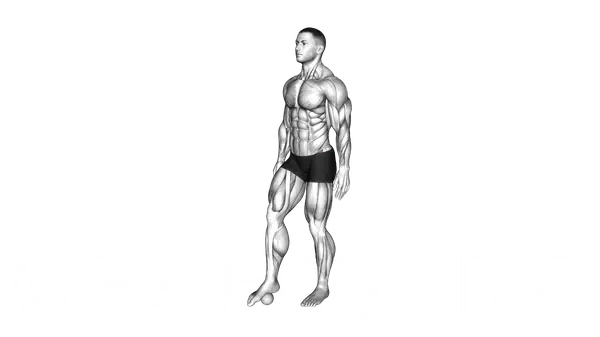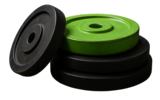Exercise
Foot Rolling with Ball

Foot Rolling with Ball
How to Perform
- Find a comfortable chair or bench and sit with both feet flat on the floor, placing a small massage ball, tennis ball, or lacrosse ball under one foot.
- Position the ball under the arch of your foot initially, distributing your weight comfortably while maintaining good upright posture with your shoulders relaxed and spine neutral.
- Apply gentle pressure by transferring some of your body weight onto the foot with the ball beneath it, allowing the ball to press into the soft tissue of your foot.
- Roll the ball slowly from the heel toward the toes, breathing normally and adjusting pressure as needed for your comfort level.
- Pause on any tender areas (trigger points) for 5-10 seconds while taking deep breaths to help release tension in the foot.
- Continue rolling the ball under your foot, systematically covering the entire sole from the heel to the ball of your foot and across the width from the inner to outer edge.
- After covering the entire foot area for 1-2 minutes, switch to the opposite foot and repeat the same process, maintaining even breathing throughout.
- To increase intensity, you can stand up and place more body weight onto the foot with the ball, keeping a chair or wall nearby for balance if needed.
Important information
- Keep your movements slow and controlled, avoiding rapid rolling that might cause the foot to tense up rather than release.
- If you experience sharp or shooting pain (rather than therapeutic discomfort), reduce pressure or choose a softer ball.
- Work within your tolerance level—this should feel like a "good hurt" rather than painful.
- Perform this exercise daily for optimal results, especially before workouts or after long periods of standing.

Foot Rolling with Ball
Exercise Details
Mechanic
Built for progress
Take the guesswork out of training
Create personalized AI-powered workout plans that evolve with you. Train smarter, track every rep and keep moving forward, one workout at a time.






Foot Rolling with a Ball is a simple and relaxing recovery exercise that helps your feet feel lighter and move better. By gently rolling a small ball under your foot, you ease tight spots, improve circulation, and reduce the soreness that can build up after walking, running, or standing for long periods.
Even though it looks like a small movement, it does more than just loosen your feet. Keeping your balance while rolling also activates your core muscles and improves your overall stability. It’s an easy way to strengthen your body without heavy effort or strain.
Doing this exercise regularly helps your feet recover faster, keeps them flexible, and can even improve how your knees and hips move. It’s a great addition to your cooldown after a workout or as a short daily routine to keep your lower body feeling fresh and mobile.
Foot Rolling with a Ball shows that recovery and strength go hand in hand: sometimes the simplest movements make the biggest difference.
FAQ - Foot Rolling with Ball
While primarily targeting the plantar fascia on the bottom of your foot, foot rolling also engages your deep core stabilizers as you maintain balance. This creates a kinetic chain reaction that improves function throughout your legs and trunk.
Aim for 2-3 minutes per foot, 3-5 times weekly for maintenance, or daily if recovering from plantar fasciitis or intense training. You can incorporate it as part of your warm-up, cool-down, or as a standalone mobility session during rest days.
A firm tennis ball works well for most people, while a lacrosse ball provides deeper pressure for experienced users. Golf balls offer intense, targeted pressure, while softer massage balls are ideal for beginners or those with foot sensitivity.
Yes, regular foot rolling helps relieve plantar fasciitis symptoms by increasing blood flow, breaking up adhesions, and reducing inflammation. For best results, combine with proper footwear, stretching, and gradually increasing intensity as tolerance improves.
Avoid applying too much pressure too quickly, which can cause additional pain or inflammation. Don't rush through the movement—spend time on tender spots without forcing pain. Also, maintain proper posture rather than hunching over, which negates the core stability benefits.
